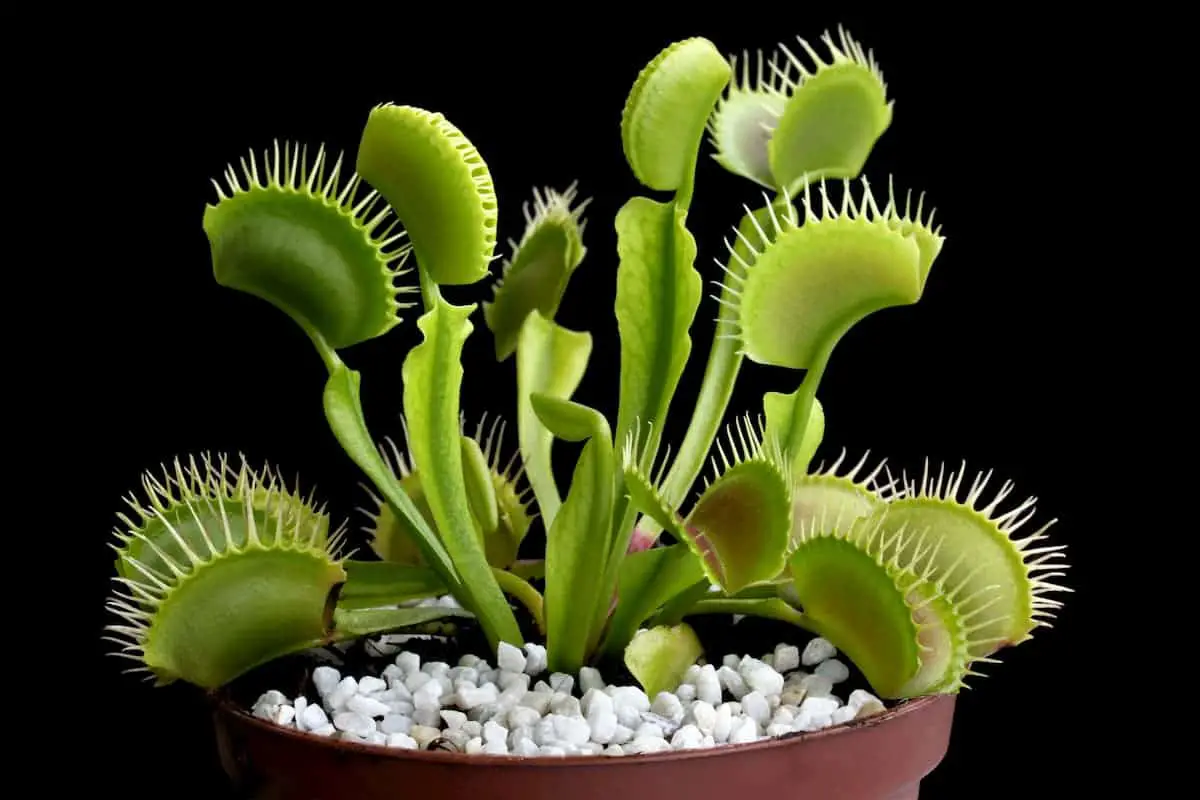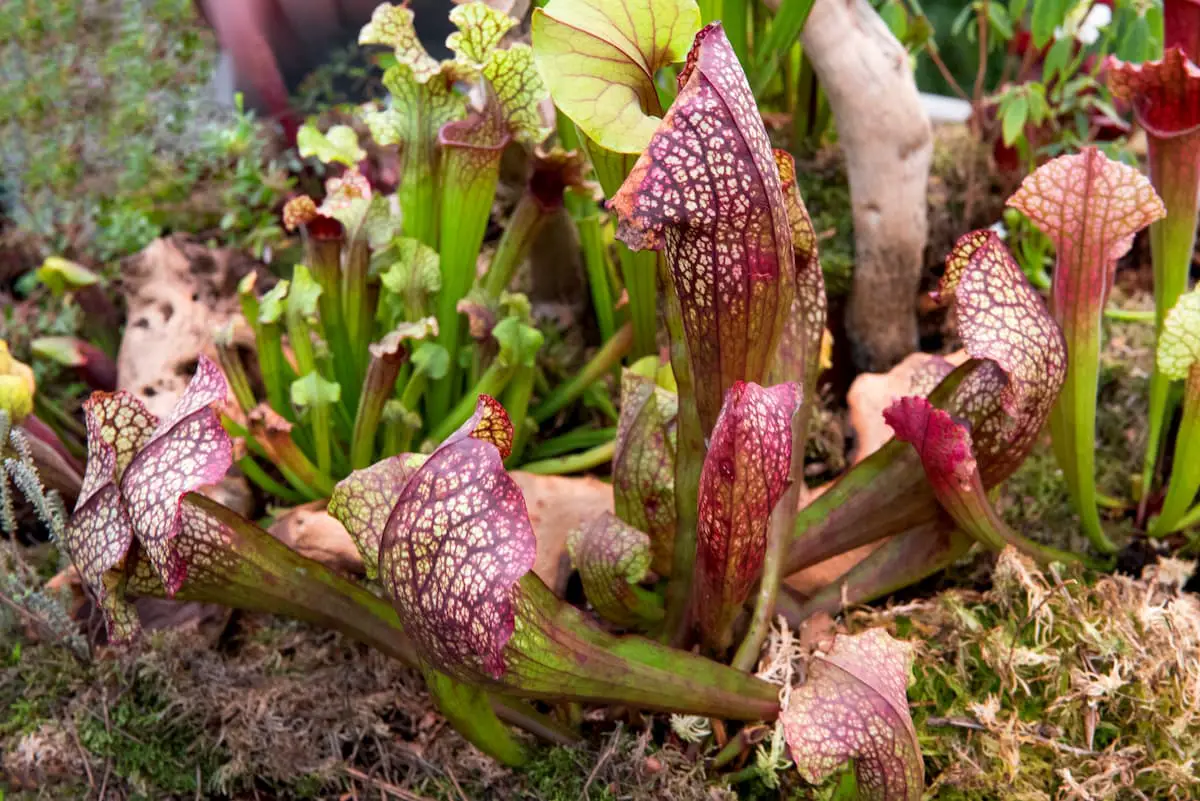Are you considering adding a Venus fly trap to your plant collection? If so, one of the questions you may be asking yourself is whether or not you can use cactus soil for this unique carnivorous plant.
While it may seem like a logical choice due to their shared preference for well-draining soil, there are some important factors to consider before making the switch.
Cactus soil is typically made up of a combination of sand, perlite, and peat moss, which allows for excellent drainage and aeration. However, despite these similarities with Venus fly trap soil requirements, cactus soil may not necessarily be the best option.
Venus fly traps are native to boggy areas with high levels of acidity and low nutrient content in the soil. As such, they require a specific type of growing medium that mimics these conditions.
In this article, we’ll explore whether or not cactus soil can meet these requirements and provide tips on how to ensure your Venus fly trap thrives in its new home.
Understanding Venus Fly Trap Soil Requirements
Venus fly traps, with their iconic snapping jaws, are fascinating carnivorous plants that require specific soil conditions to thrive. The right soil moisture is essential for the plant’s survival as it prefers moist soil but can suffer from overwatering. Nutrient availability is another critical factor in providing the right environment for these plants to grow healthy and strong.
The Venus fly trap’s natural habitat is in nutrient-poor soils, making it adapted to acquire nutrients from prey through its unique trapping mechanism. The plant requires a well-draining soil mixture that mimics its native environment and allows for oxygen to reach the roots. Inadequate drainage or soil compaction can lead to root rot, a common issue that causes the plant’s demise.
Finding the right soil mix for your Venus fly trap can be challenging, but it’s crucial for its growth and survival. Understanding the plant’s requirements will help you create a suitable growing medium that promotes healthy root development, nutrient uptake, and protection against diseases.
In the following section, we will explore the pros and cons of using cactus soil for Venus fly traps and whether it’s an ideal option for this carnivorous plant.
Pros And Cons Of Using Cactus Soil For Venus Fly Traps
As mentioned earlier, Venus Fly Traps require specific soil conditions to thrive. While some may consider using cactus soil as an alternative, it’s important to weigh the advantages and disadvantages before making a decision.
Advantages of using cactus soil for Venus Fly Traps include its fast-draining properties and high mineral content. These traits can provide adequate moisture without causing root rot, which is a common issue with Venus Fly Trap soil. Additionally, the minerals in cactus soil can help support the plant’s growth.
However, there are also some disadvantages to using cactus soil for Venus Fly Traps. The first is that it lacks organic matter, which is essential for healthy plant growth. Additionally, the pH levels in cactus soil can be too high for Venus Fly Traps and lead to nutrient deficiencies. Lastly, cactus soil can contain perlite or sand particles that are too large for the small roots of Venus Fly Traps.
When deciding on the best type of soil for your Venus Fly Trap, it’s crucial to consider these advantages and disadvantages. While cactus soil may work for some individuals, others may opt for a more suitable alternative such as sphagnum moss or peat moss. Ultimately, finding the right balance of nutrients and moisture will ensure a healthy and thriving plant.
In terms of tips for choosing the best soil for your Venus Fly Trap, it’s important to research different options thoroughly before making a decision. Consider factors such as drainage rate, pH levels, nutrient content, and particle size when selecting your preferred option.
Additionally, regularly monitoring your plant’s growth and health will allow you to make adjustments as needed to optimize its growing conditions.
Tips For Choosing The Best Soil For Your Venus Fly Trap
Choosing the right soil for your Venus Fly Trap is as crucial as selecting a wardrobe for an interview. Just like how a well-fitted suit can boost your confidence, the perfect soil mixture can help your plant thrive. The wrong soil acidity and moisture levels can cause harm, leading to stunted growth or even death.
To ensure optimal growth, Venus Fly Traps require soil with high acidity and low nutrient content. A good rule of thumb is to aim for a pH level between 4.5 and 5.5. Acidic soils mimic their natural habitat, where they grow in poor-quality soils that lack essential nutrients such as nitrogen and phosphorus.
When it comes to moisture levels, Venus Fly Traps require consistent dampness without waterlogging the roots. It’s best to use a mixture of sphagnum peat moss and perlite or sand to improve drainage while retaining moisture. Avoid using regular potting soil or cactus soil, which contains too many nutrients and retains too much water, leading to root rot.
Remember that choosing the best soil for your Venus Fly Trap is not rocket science; it just requires some basic knowledge about its natural habitat and growing conditions. So next time you’re shopping for soil mixtures, keep in mind its acidity level and moisture content to give your plant the best chance at survival!
Frequently Asked Questions
How Often Should I Water My Venus Fly Trap If I Am Using Cactus Soil?
When it comes to watering a Venus fly trap, it’s important to consider the soil composition.
If you’re using cactus soil, the frequency of watering will likely be different than if you were using regular potting soil.
Cactus soil tends to be more porous and well-draining, which means it may dry out faster than other types of soil.
As a general rule, you should water your Venus fly trap when the top layer of soil feels dry to the touch.
Depending on the environment and season, this could mean watering once every few days or once a week.
Keep an eye on your plant and adjust your watering schedule as necessary to ensure it stays healthy and happy.
Can I Mix Cactus Soil With Other Types Of Soil For My Venus Fly Trap?
Mixing soil types for your Venus fly trap can be a good idea, as it allows you to create the ideal conditions for your plant to thrive.
However, it’s important to consider soil drainage when doing so. Cactus soil is known for being well-draining, and can be mixed with other types of soil to improve drainage for your Venus fly trap.
When combining soils, make sure to use a ratio that provides enough moisture retention for the plant without causing waterlogging, which can harm the roots.
By experimenting with different soil mixes, you can find the perfect balance for your Venus fly trap’s needs.
Will Using Cactus Soil Affect The Growth Rate Of My Venus Fly Trap?
If you want to ensure the optimal growth rate for your Venus fly trap, it’s important to pay attention to the soil composition and ideal growing conditions.
While using cactus soil may seem like a good idea due to its fast-draining properties, it may not be the best fit for your carnivorous plant.
Cactus soil is typically formulated with a high percentage of sand and perlite, which can lead to excessive drainage and dryness for a Venus fly trap’s delicate roots.
Instead, consider using a soil mix specifically designed for carnivorous plants or make your own by blending peat moss, perlite, and sand in equal parts.
This will provide the ideal growing conditions that your Venus fly trap needs to thrive.
Do I Need To Add Any Extra Nutrients To The Soil If I Am Using Cactus Soil For My Venus Fly Trap?
If you are planning to use cactus soil for your Venus fly trap, it is important to ensure that the soil meets the nutrient requirements of the plant.
While cactus soil may be well-draining and have an appropriate pH level, it may not contain all of the necessary nutrients that a Venus fly trap needs to thrive.
Adding extra nutrients, such as nitrogen, phosphorus, and potassium, can help ensure that your plant receives all of the essential elements for healthy growth.
Additionally, it is important to monitor the soil pH levels regularly to ensure that they remain within a suitable range for your Venus fly trap’s needs.
Is It Possible To Overwater My Venus Fly Trap If I Am Using Cactus Soil?
One concern many Venus fly trap owners have is overwatering their plant, and it can be a common issue when not using the right soil type.
While cactus soil may seem like a good choice due to its excellent drainage properties, it’s important to note that overwatering prevention is still necessary.
Comparing soil types for Venus fly traps can help you find the perfect balance between water retention and drainage.
So, if you’re using cactus soil, be sure to monitor your watering schedule carefully and adjust as needed to avoid any potential issues.
Conclusion
In conclusion, using cactus soil for your Venus fly trap can be a great option. However, it’s important to know how to properly care for your plant in this type of soil.
One tip is to water your Venus fly trap less frequently than you would with regular soil. This will help prevent overwatering and ensure that your plant stays healthy.
Additionally, mixing cactus soil with other types of soil may also be beneficial for your Venus fly trap. Just make sure not to add any extra nutrients to the soil, as this can harm the plant.
By following these tips and keeping an eye on your plant’s growth rate, you can successfully use cactus soil for your Venus fly trap and watch it thrive.




Leave a Reply